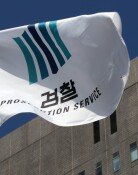KAIST Satellite Technology Research Center chief: ‘It is an honor to be first customer of Nuri'
KAIST Satellite Technology Research Center chief: ‘It is an honor to be first customer of Nuri'
Posted May. 27, 2023 07:46,
Updated May. 27, 2023 07:46

“I am so thrilled to be able to mount our artificial satellite on a domestic launch vehicle after 31 years, and it is an honor to be the first ‘customer’ of Nuri.”
Han Jae-heung (pictured), director of KAIST Satellite Technology Research Center, who developed Next Generation Small Satellite-2, the first practical satellite launched by Nuri into space, said the above comment in an interview with The Dong-A Ilbo on Friday, one day after the third launch of Nuri. Next Generation Small Satellite-2, the main payload satellite for the third launch of Nuri, succeeded in the initial communication with the ground station in Daejeon KAIST Artificial Intelligence Research Center at 7:58 p.m. on Thursday. Subsequently, in the early Friday morning, two-way communication with Daejeon and overseas ground stations was also successful seven times.
Next Generation Small Satellite-2 is the 10th artificial satellite that KAIST Satellite Technology Research Center developed. It has been 31 years since Wooribyul-1, Korea's first satellite, was developed and led by KAIST. “The concept of a satellite was not well known in Korea until about 30 years ago," Director Han said. "Thirty-one years of satellite research was close to ‘discovery.’” In particular, synthetic-aperture radar (SAR), a key component of Next Generation Small Satellite-2, faced many difficulties until localization. As an advanced and important defense technology, it was not easy to import it from the United States. After several trials and errors, KAIST Satellite Technology Research Center succeeded in developing the Next-generation Small Satellite-2, the first satellite in which all core parts, including SAR, have been localized.
The successful launch of the Nuri has great significance in the history of domestically developed satellites. Due to the nature of the commercial launch vehicle market, supply (projectiles) is far short of demand (satellite), so it is natural for countries or companies with launch vehicles to get an upper hand in negotiations. While Russian projectiles have become near impossible following the Russia-Ukraine conflict, the pendulum of power is leaning more toward projectiles.
It is also a great advantage that the satellite can be guaranteed the orbit and launch time required for the mission. Should a foreign launch vehicle be used, it would need to be mounted on a launch vehicle headed as close as possible to the desired trajectory. Additional work will be required after being separated from the launch vehicle, such as correcting the orbit with a satellite thruster. “When domestic launch vehicles start full-scale satellite transportation services, domestic satellites will see a great improvement in their mission capability,” Director Han said.
jwchoi@donga.com
Headline News
- Med professors announce intention to leave hospitals starting Thursday
- Bridge honoring Sgt. Moon Jae-sik unveiled in Pennsylvania
- Chief of Staff Chung tells presidential secretaries to stay away from politics
- US FTC bans noncompete agreements
- N. Korea launches cyberattacks on S. Korea's defense companies







